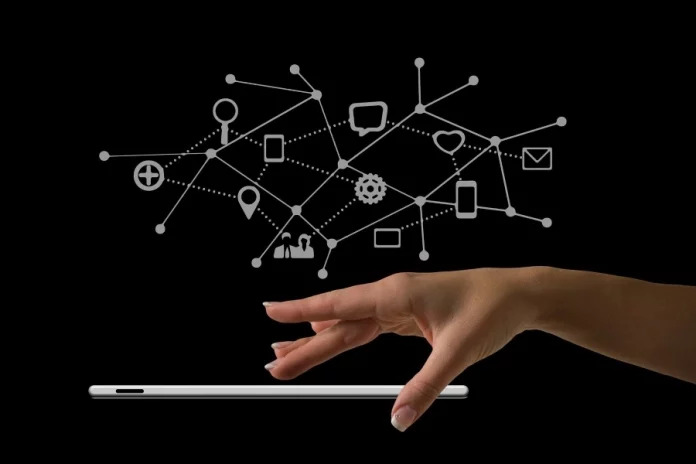It can be hard to look into the future and see what the world will look like. With the advancement of technology and science, the world is changing rapidly, which is why we’ve been asked to stay on top of emerging trends.
By knowing what these trends are, you’ll be better equipped to make good decisions whether they involve your business or personal life. Let’s dive in.
Digitization Speedup
Many companies have been working on their full digital transformation at least for the past two years since the pandemic emerged and accelerated this trend. Whether we like to admit it or not, Covid-19 forced organizations to modernize their culture, organizational structures, measuring systems, and operating architectures.
Top business leaders agree that even if their company is ahead today, they must be prepared to evolve, take smart risks, and fail swiftly or risk disruption. Accelerating digital transformation journeys will be a top priority for many businesses to assure company continuity, boost efficiency, and launch new business models.
The On-Demand Labor
On-demand labor models and platforms improve workforce planning, financial management, and skill access. Improved people management programs, methods, and tools can help companies engage and retain on-demand personnel.
New Healthcare Reforms
The pandemic has sparked healthcare reforms in the U.S., U.K., France, and many other countries, so, building the new system will generate new possibilities for many. Companies must focus on individual healthcare beyond industry transformation.
Remote employment, social isolation, and social alienation will heighten the desire for emotional connection. Companies will prioritize employee mental health and well-being to offset reduced in-person human contact.
Psychedelic Use
In clinical research settings all over the world, psychedelics are being studied to treat addiction, depression, anxiety, and PTSD. Since the 1950s through the early 1970s, psychedelics have been categorized as “drugs of abuse” with no medical benefit.
However, there are recent controlled clinical trials and psychedelic news that assessed the psychopharmacological characteristics and therapeutic efficacy of these medications as psychotherapy adjuncts. Set (i.e., psychological expectations), setting (i.e., physical surroundings), and the therapeutic clinician-patient connection is key to facilitating healing and favorable outcomes.
Supply-Chain Fragmentation And Reconfiguration
Technology platforms will divide supply networks. Multi-tier supply chains will track the provenance of supply and value-adds. This would allow for new ways to engage customers, manage inventories, optimize manufacturing and distribution, and manage cash/capital.
5G internet will also enhance the use of online internet systems, reducing the risk of too much centralization. In the future, organizations must consistently produce breakthrough consumer value. In a fast-changing business environment, value generation will be difficult without global thinking and strategic alliances and partnerships.
Redefined Workplace
If remote employment continues for more than three months, work habits could change permanently. This will redefine work-life and personal-life boundaries. The workplace won’t be a place where people work and go home.
Major changes will need to reimagine the workplace’s purpose. Workplaces will become collaborative hubs to achieve common goals, not just places to work. Travel costs will be lowered, forcing virtual interactions to replace face-to-face encounters.
Upskilling And Reskilling
Airlines, retail, hotels, healthcare, education, construction, and technology will need to rapidly adapt their business models to remain viable. New business models and value chains require new talents.
The WEF warned last year of a severe disruption in 15 rich and emerging countries’ labor markets that would lead to a net loss of nearly 5 million jobs and the creation of millions more. To minimize social and economic impacts, many organizations will reskill and upskill their workforces.
Education and training systems must be overhauled to allow workers to reskill and upskill using virtual solutions. Adopting human-centered technology will ensure communication and knowledge streams.
Different Work Patterns
Changing corporate procedures will reduce demand for commercial real estate, lowering prices. Once remote work becomes more common, the demand for corporate complexes decreases but opens up other forms of utilization, such as space sharing, event hire, and collaborative venues.
Rapid Innovation
Technology will continue to fuel business model innovation across industries, allowing new enterprises to disrupt incumbents. Business executives must be creative and innovative to generate growth, stay relevant in changing times, and differentiate from the competition. If companies don’t adapt, they may face an existential crisis.
New Perspectives
People and enterprises that don’t adapt to our new reality will be left behind, and it will be hard to catch up with the number of changes. New human mindsets will drive the successful deployment of technology-enabled transformations to advance businesses. Post-Covid-19, companies will rely heavily on cultural change, new ground rules, beliefs, and assumptions will drive employees and businesses.
Final Thoughts
All industries have been affected by the pandemic crisis, which has challenged the status quo and conventional wisdom. However, by recognizing some of the patterns outlined above and acting quickly, both individuals and businesses can gain an advantage in this disruptive environment.
The convergence of trends, events, and developments has shaped our contemporary world and civilization as a whole. In the years to come, the ten trends mentioned above will continue to have an impact on how people and businesses conduct themselves around the world, and many more new trends will emerge in their wake.










![How to Become a Travel Agent [Certifications, Perks, and Income] travel agent](https://www.moneytaskforce.com/wp-content/uploads/2019/06/travel-100x70.jpg)

